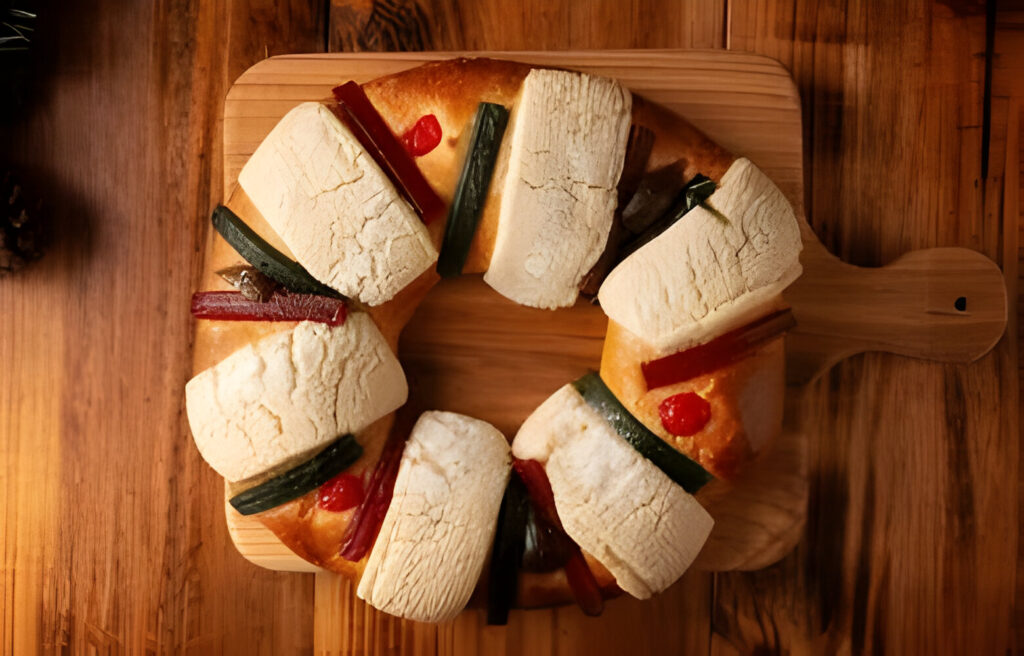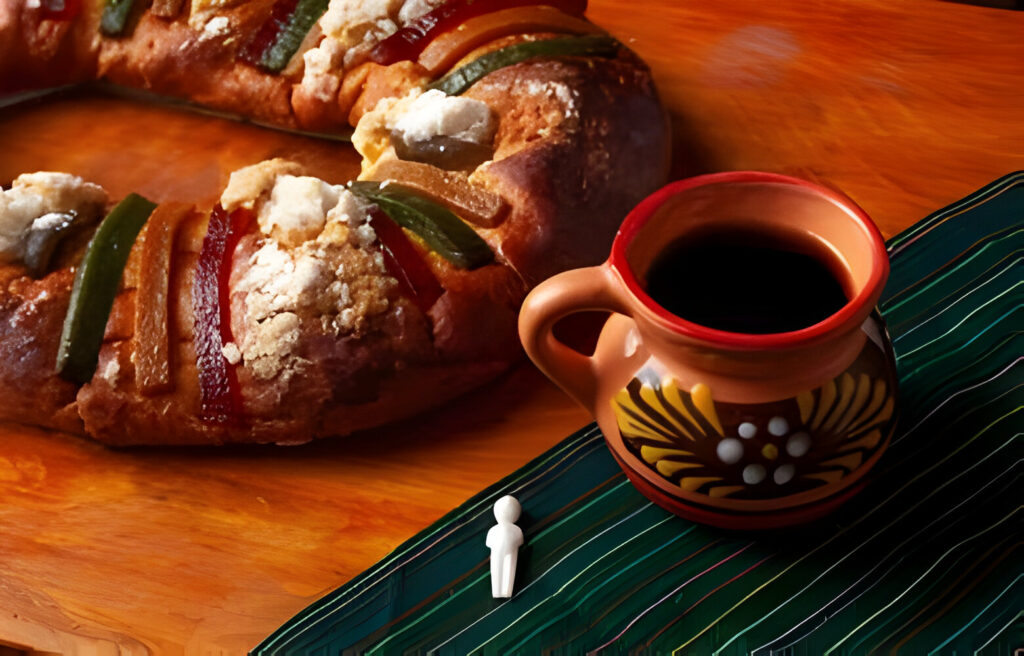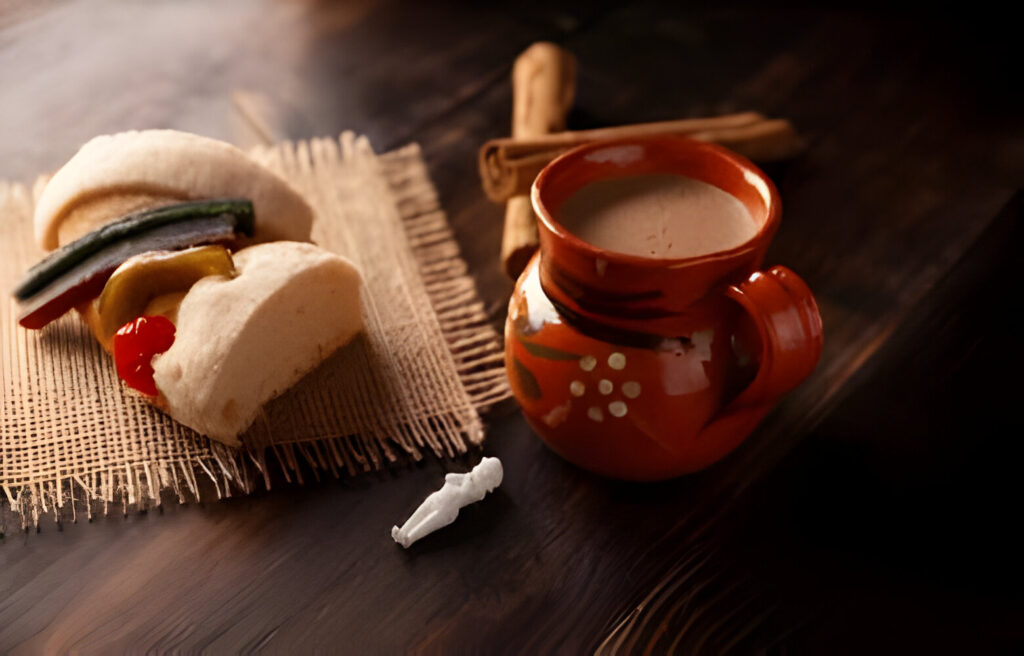
The History and Tradition of Rosca de Reyes
A Festive Legacy
The Rosca de Reyes, or Kings’ Cake, holds a treasured spot in the heart of holiday traditions. Originating from medieval Europe, it has become a symbol of Epiphany celebrations worldwide. Specifically, this cake honors the Biblical story of the Three Wise Men visiting the infant Jesus. The tradition arrived in the Americas with European settlers, evolving into a cultural staple over centuries.
Symbolism in Every Slice
At its core, the Rosca de Reyes embodies rich symbolism. Its circular or oval shape represents a king’s crown, reflecting the endless love and eternal life that Christianity associates with Jesus Christ. Embedded within the cake lies a small figurine, symbolizing the hiding of Jesus from King Herod’s troops. Traditionally, finding the figurine brings both responsibility and blessings, including hosting the upcoming Candlemas feast on February 2nd.
Diverse Celebrations Across Cultures
While the Rosca de Reyes roots itself in Christian tradition, various cultures have embraced and adapted the cake to fit local customs. In Spain, it often features elaborate candied fruits and nuts, symbolizing the jewels on a crown. Mexican traditions include hot chocolate as the preferred accompaniment, adding warmth to the celebration. Each variation of the cake not only honors the original tradition but also weaves in the unique flavors and customs of its people.
A Unifying Tradition
Despite these variations, the essence of the Rosca de Reyes remains constant: it brings people together. Families and friends gather to cut the cake, eagerly anticipating who will find the figurine. This moment of joy and fellowship underscores the celebration’s importance, transcending cultural and geographical boundaries. Through the Rosca de Reyes, communities worldwide share in a tradition that celebrates faith, heritage, and the joy of togetherness.
Essential Ingredients and Tools for Your Rosca de Reyes
Creating a Rosca de Reyes, a festive and flavorful bread, requires precision and the right set of ingredients and tools. Here, we’ll guide you through each necessary component, ensuring your baking experience is as seamless and enjoyable as the celebration itself.
Ingredients for Success
Flour and Yeast: The Foundation
Start with high-quality all-purpose flour, the backbone of your Rosca. It provides structure. Active dry yeast or instant yeast will be your leavening agent, essential for a light, airy bread. Choose fresh, high-quality yeast for the best rise.
Sugars and Fats: Flavor and Texture
Granulated sugar sweetens your bread, while unsalted butter adds richness and tender texture. Ensure your butter is at room temperature for seamless integration into the dough.
Eggs: Binding and Richness
Eggs contribute to the Rosca’s rich flavor and color. They also act as a binder, bringing all ingredients together harmoniously.
Milk and Warm Water: Moisture and Activation
Warm milk and water activate the yeast and hydrate the flour. Use them at the right temperature (about 110°F) to ensure the yeast thrives.
Flavorings: The Signature Aroma
Orange zest and traditional spices give Rosca de Reyes its signature aroma and taste. Fresh zest works best for a vibrant flavor.
Tools of the Trade
Mixing Bowls and Measuring Cups: Precision in Preparation
Quality mixing bowls and accurate measuring cups are vital. They ensure precise ingredient proportions, critical for dough consistency.
Dough Mixer or Hand Mixer: Ease in Mixing
A stand mixer with a dough hook attachment makes mixing dough easier. A hand mixer can also work, but be prepared for a bit of a workout.
Baking Sheet and Parchment Paper: For Perfect Baking
A large baking sheet accommodates the Rosca’s size. Parchment paper prevents sticking and ensures a smooth bottom.
Pastry Brush and Kitchen Scale: The Finishing Touches
A pastry brush allows for even application of egg wash, giving your Rosca a golden finish. A kitchen scale ensures ingredient accuracy, crucial for dough perfection.
In conclusion, gathering the right ingredients and tools before starting your Rosca de Reyes ensures a smooth baking process. Moreover, it enhances your enjoyment of this festive tradition. With everything in place, you’re well on your way to creating a delicious centerpiece for your celebration.
Step-by-Step Rosca de Reyes Recipe
Embarking on the journey to bake a Rosca de Reyes can be as fulfilling as the festive occasion it celebrates. This part of the guide walks you through the recipe, ensuring clarity at each step for a delightful baking experience.
Preparing the Dough
Starting the Yeast Mixture
Begin by combining warm milk (110°F) with a teaspoon of sugar and the yeast in a bowl. Stir gently and let it sit for 5-10 minutes, until frothy. This step is crucial for activating the yeast.
Mixing Dry Ingredients
In a large mixing bowl, whisk together the flour, the remaining sugar, and a pinch of salt. This blend forms the dry base of your dough.
Adding Wet Ingredients
To the yeast mixture, add eggs, melted butter, and orange zest. Mix well. Then, gradually incorporate this wet mixture into the dry ingredients. Use a stand mixer or a wooden spoon to blend until a sticky dough forms.
Kneading the Dough
Transfer the dough to a floured surface. Knead for about 10 minutes, until it becomes smooth and elastic. This process develops the gluten, giving the Rosca its structure.
Proofing the Dough
First Rise
Place the kneaded dough in a greased bowl, covering it with a damp cloth. Let it rise in a warm place for 1-2 hours, or until it doubles in size. The dough’s growth indicates successful fermentation.
Shaping and Second Rise
Punch down the risen dough to release air. Shape it into a large ring on a parchment-lined baking sheet, carefully hiding the figurine inside. Cover the shaped dough with a cloth and allow it to rise again for about 45 minutes. This second proofing ensures a light, airy bread.
Baking to Perfection
Preheating the Oven
While the dough is in its final rise, preheat your oven to 350°F. A properly heated oven is key to achieving a golden crust.
Applying Egg Wash
Before baking, gently brush the dough with a beaten egg. This gives the Rosca a beautiful, shiny finish.
Baking Time
Bake the Rosca in the preheated oven for 20-25 minutes, or until golden brown. The baking time might vary, so keep an eye on the bread’s color and aroma.
Following this step-by-step guide, you’ll master the art of making Rosca de Reyes. Each phase, from preparing the dough to the final baking, contributes to the creation of a perfect festive bread. Enjoy the process and look forward to the delicious result that symbolizes good fortune for the year ahead.

Decoration and Serving Suggestions for Rosca de Reyes
Once your Rosca de Reyes has beautifully baked and cooled, the next exciting step is decoration. This stage allows for creativity and personal touch, making the bread not only a treat to eat but also a feast for the eyes.
Embellishing Your Rosca
The Traditional Garnish
Traditionally, the Rosca de Reyes is adorned with candied fruits such as cherries, figs, and oranges. These colorful toppings symbolize the jewels found in the crowns of the Wise Men. Arrange the candied fruits atop the bread in a pattern or scatter them for a vibrant look.
Adding Sweet Accents
Powdered sugar and strips of quince or guava paste can add sweetness and texture. For an added sheen and sweetness, a simple glaze made from powdered sugar and milk drizzled over the bread does wonders.
Edible Figurines
While the hidden figurine is a key tradition, placing small, edible figurines on top can also enhance the theme and delight younger participants.
Serving Your Masterpiece
The Perfect Cut
Serve the Rosca de Reyes by slicing it into thick pieces, ensuring each guest has a chance to find the hidden figurine. This moment of discovery is always met with excitement and anticipation.
Pairing with Beverages
Hot chocolate or coffee makes the perfect accompaniment to the Rosca. Their warmth complements the sweet, citrus-infused bread, making for a cozy and satisfying experience.
Storing Leftovers
If there are any leftovers, store the Rosca in an airtight container at room temperature. It will stay fresh for a couple of days, allowing you to extend the celebration.
Decorating and serving the Rosca de Reyes brings the festive experience full circle. It’s not just about the baking; it’s about creating moments of joy, surprise, and community. Follow these suggestions to make your Rosca de Reyes the centerpiece of a memorable celebration.
Common Mistakes and Troubleshooting Tips for Rosca de Reyes
Baking a Rosca de Reyes is a rewarding endeavor, yet it comes with its set of challenges. Here, we outline common mistakes bakers might encounter and provide expert tips to correct them, ensuring your Rosca turns out perfectly every time.
Dough Doesn’t Rise
Mistake: The dough remains flat, showing little to no growth during the proofing stages.
Tip: Ensure your yeast is fresh and active. If the milk or water is too hot, it might kill the yeast; too cold, and it won’t activate. Aim for a temperature around 110°F. Also, give your dough a warm, draft-free environment to encourage rising.
Dry or Hard Rosca
Mistake: The finished Rosca de Reyes is dry or hard, lacking the desired softness and moisture.
Tip: Overbaking is a common cause. Monitor your oven’s temperature and baking time closely. Additionally, ensure your measurements, especially for flour and liquids, are accurate. A kitchen scale can help with precision.
Dough Is Too Sticky
Mistake: The dough is excessively sticky, making it hard to handle and shape.
Tip: While a slightly sticky dough is normal, adding a little more flour, a tablespoon at a time, can help manage it. However, avoid adding too much, as this can lead to dryness. Kneading well also develops the gluten, making the dough easier to work with.
Uneven Baking
Mistake: Some parts of the Rosca are underbaked, while others are overdone.
Tip: Ensure your oven is properly preheated and use an oven thermometer to check for accurate temperature settings. Positioning the baking sheet in the center of the oven can also promote even baking. Rotate the pan halfway through if your oven has hot spots.
Flavor Is Lacking
Mistake: The Rosca tastes bland or doesn’t have the rich, aromatic flavor expected.
Tip: Quality ingredients are key. Use fresh spices and genuine orange zest to enhance the flavor profile. Also, a little extra time spent on developing the dough’s flavor through a longer, slow fermentation can make a big difference.
Tackling these common issues can transform your Rosca de Reyes baking experience from frustrating to fulfilling. Each tip not only solves a problem but also teaches a valuable baking lesson, making you a more skilled and confident baker. Remember, baking is an art that requires patience and practice, so embrace each challenge as a step towards mastering the craft.

Conclusion and Invitation for Community Engagement
As we wrap up this comprehensive guide on creating the perfect Rosca de Reyes, it’s clear that this traditional bread is more than just a recipe; it’s a celebration of culture, tradition, and the joy of baking together. We’ve walked through the history, essential ingredients, detailed steps, decoration ideas, and troubleshooting tips to ensure your Rosca de Reyes is as delightful to make as it is to eat.
Celebrating Success and Sharing Experiences
Reflecting on the Journey
Baking a Rosca de Reyes offers a unique opportunity to delve into a rich cultural tradition. Whether you’re a seasoned baker or trying this recipe for the first time, each step brings its own satisfaction and challenges.
Sharing Your Story
We encourage you to share your Rosca de Reyes stories, photos, and tips in the comments section below. Your experiences can inspire and help others in their baking adventures, creating a vibrant community of enthusiasts.
Fostering a Community of Bakers
Learning Together
Every baker’s journey is filled with trials and triumphs. By sharing your insights and asking questions, you contribute to a knowledge-sharing platform that enriches everyone’s experience.
Encouragement for New Bakers
If you’re new to baking or this tradition, don’t hesitate to reach out for advice or share your first attempt. There’s no better way to learn than by doing and engaging with others who share your interests.
In closing, the Rosca de Reyes is more than just a holiday bread; it’s a symbol of fellowship and sharing. As you embark on this baking journey, remember that every effort brings you closer to mastering this delightful recipe. We invite you to keep the tradition alive by sharing your creations and becoming part of a community that celebrates the joy of baking. Let’s spread the warmth and sweetness of Rosca de Reyes far and wide, one loaf at a time.
Frequently Asked Questions about Rosca de Reyes
When embarking on the journey of making Rosca de Reyes, numerous questions may arise. This FAQ section aims to address those queries in a concise, easy-to-understand manner, enhancing your baking experience and ensuring success.
What Is Rosca de Reyes?
Rosca de Reyes, or Kings’ Cake, is a traditional sweet bread. It symbolizes the festive celebration of Epiphany or Three Kings’ Day, commemorating the visit of the Magi to the Christ Child. The bread’s circular shape represents a crown, adorned with candied fruits as jewels.
How Do I Know If My Yeast Is Active?
To test yeast’s activity, mix it with a little warm water and sugar. Wait for 5-10 minutes. If the mixture becomes frothy and bubbly, your yeast is active and ready to use.
Can I Use Instant Yeast Instead of Active Dry Yeast?
Yes, you can use instant yeast in place of active dry yeast. The conversion is typically 1:1. Instant yeast doesn’t require activation and can be mixed directly with dry ingredients.
What If My Dough Doesn’t Rise?
Ensure your yeast was active and the environment warm enough for proofing. If the dough doesn’t rise, the yeast might have been old or the temperature too low for activation. A draft-free, warm spot is ideal for rising.
How Can I Store Leftover Rosca?
Store the Rosca in an airtight container at room temperature for up to two days. For longer storage, wrap it tightly in plastic wrap and refrigerate. Warm it slightly before serving to restore its freshness.
What Happens If I Find the Figurine in My Slice?
Finding the figurine in your slice of Rosca de Reyes carries a tradition. It signifies luck and the responsibility of hosting or contributing to next year’s celebration, specifically preparing or buying the Rosca.
This FAQ aims to clear up common uncertainties surrounding Rosca de Reyes, making your baking journey smoother and more enjoyable. With these questions addressed, you’re better equipped to dive into the delightful tradition of making and sharing this special bread.
More from recipesmaya.com: